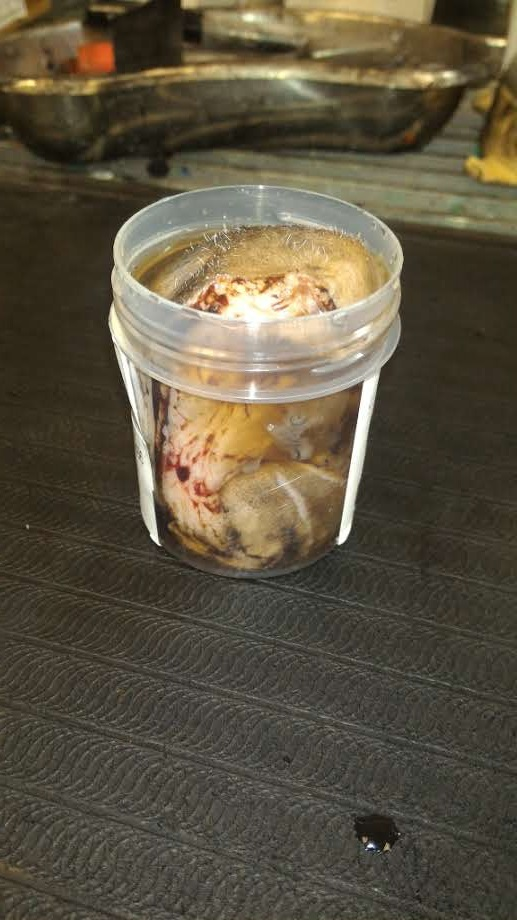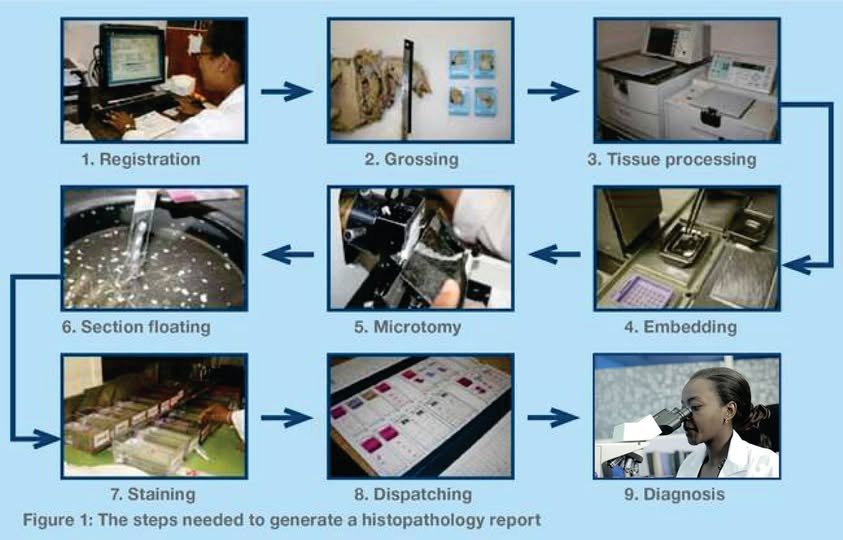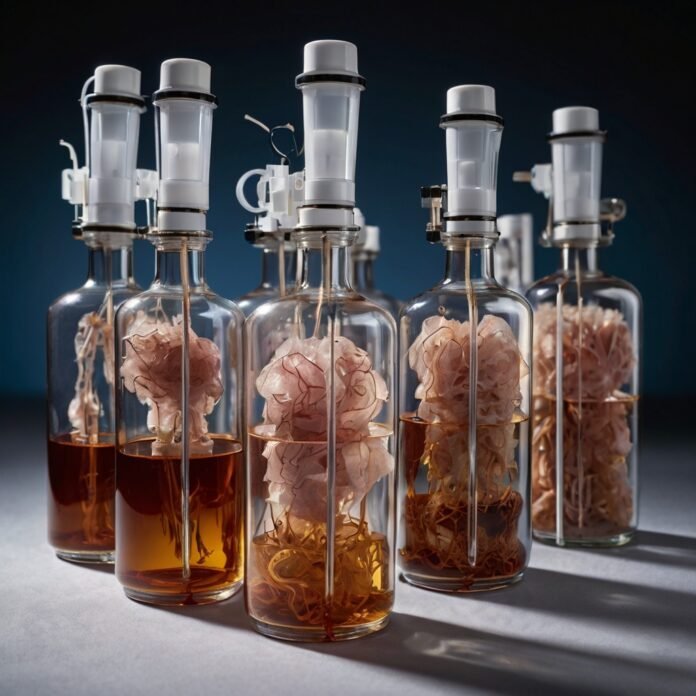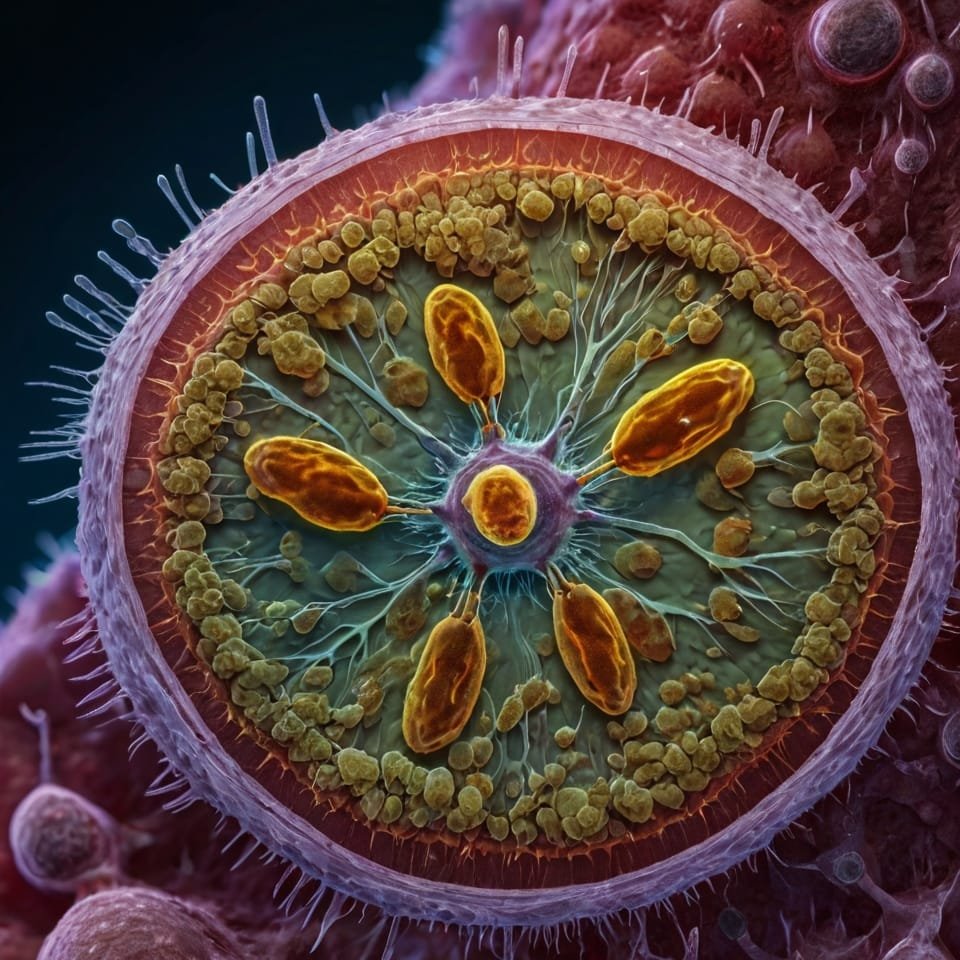Introduction to Tissue Fixation in Histopathology
In histopathology, the accurate examination of tissues depends heavily on proper fixation. Fixation stabilizes tissue structure and preserves molecules like proteins, DNA, and lipids, enabling reliable microscopic analysis. Without effective fixation, tests such as staining, immunohistochemistry, and molecular analysis become unreliable or impossible.
Why Is Fixation Important?
- Preserves tissue morphology: Maintains the microscopic architecture of cells and extracellular components.
- Prevents autolysis and decay: Stops enzyme activity that causes tissue breakdown.
- Supports diagnostic accuracy: Ensures consistent, high-quality staining and molecular studies.
- Inactivates infectious agents: Improves safety during handling.

How Do Fixatives Work?
Fixatives act through several mechanisms:
- Covalent bonding and cross-linking: Creates stable links between molecules (e.g., formaldehyde cross-links proteins).
- Dehydration: Removes water to prevent enzymatic activity.
- Acid and salt effects: Stabilize or precipitate molecules.
- Heat: Denatures proteins and aids fixation.
Note: Compound fixatives may combine these mechanisms for better preservation.
Common Fixatives and Their Pros & Cons
1. Formalin (10% neutral buffered formalin)
- Advantages: Supports excellent H&E staining, preserves tissue structure, widely used.
- Disadvantages: Can cause loss of antigen recognition (affects immunohistochemistry), complicates DNA/RNA analysis.
2. Alcohol-based fixatives
- Advantages: Good for nucleic acid preservation.
- Disadvantages: Cause tissue shrinkage, poor for morphology.
3. Other fixatives (e.g., glutaraldehyde, Bouin’s solution)
- Used for electron microscopy or special stains but have limitations like tissue distortion or toxicity.
Challenges and Limitations
- Fixatives can cause tissue swelling/shrinkage.
- Loss of soluble molecules like antigens, DNA, or lipids.
- Variability in staining quality.
- Fixation time and method greatly impact results.
Example: Formaldehyde fixation can mask antigens, but heat-induced epitope retrieval techniques developed in the 1990s help recover them for immunohistochemistry (Shi et al., 1991).
Advances in Fixation
Modern techniques aim to preserve molecular integrity for genetic and protein analysis. Fixatives should allow recovery of DNA, RNA, and proteins without extensive modification.

Characteristics of an Ideal Fixative
- Rapid penetration
- Preserves morphology and molecular components
- Compatible with various tissues
- Supports multiple staining and molecular techniques
- Long shelf life and easy disposal
- Cost-effective and safe to handle
Summary
Fixation is a cornerstone of histopathology, critical for accurate diagnosis and research. Understanding the mechanisms, advantages, and limitations of different fixatives helps in selecting the right method for specific needs.
Further Reading / References
- Dapson, R. W. (1993). “Fixatives in histology.” Journal of Histotechnology.
- Eltoum, I. A., et al. (2001). “Fixation and tissue processing.” Modern Histopathology.
- Shi, S. R., et al. (1991). “Antigen retrieval techniques.” Journal of Histochemistry & Cytochemistry.
- Grizzle, W. E., & Fredenburgh, J. (2005). “Tissue fixatives and preservation.” Laboratory Medicine.
- Jewell, S. M., et al. (2002). “DNA analysis from formalin-fixed tissues.” BioTechniques.
Remember: Proper fixation is the foundation for reliable tissue analysis—think of it as preserving a snapshot of life for future study!



